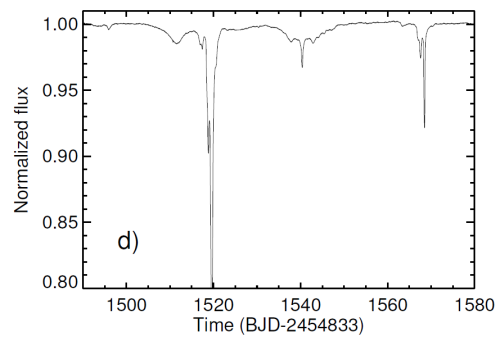
Calculating cat: Schrö makes her way through a quantum computer. (Courtesy: IQC)
By Hamish Johnston
The Internet loves cats and our readers love quantum mechanics so a new mobile app called Quantum Cats just has to be the lead item in this week’s Red Folder. Created by physicists at the Institute for Quantum Computing and researchers at the University of Waterloo Games Institute, the app immerses the user in the adventures of four cats: Classy, who obeys classical physics; Digger, who is a master of quantum tunnelling; Schrö, (above) who is a superposition of quantum states; and Fuzzy, who embodies the uncertainty principle. It’s available on Google Play and the App Store, so have a go and tell us what you think.
Continuing on the theme of fun with quantum mechanics, the latest xkcd comic has a great send-up of the myriad misunderstanding of Bell’s theorem.
This week a number of different media outlets have been asking if astronomers have seen evidence that extraterrestrial builders are building a Dyson sphere surrounding a star. Named after the British-American physicist Freeman Dyson – who did the first serious study of the hypothetical structures – a Dyson sphere could be built by an advanced alien civilization to surround a star and capture much of its energy. The star in question is KIC 8462852 and is about 1500 light-years away. Astronomers using the Kepler space telescope have measured a series of irregular dips in the intensity of the star – which darkens by as much as 22% (see image below). While regular dips are a sign that a planet is orbiting a star and blocking out some of its light, such dips are usually a few per cent at the most. So are these blips occurring as alien engineers position a Dyson sphere around their star?

Big dippers: are you looking at alien builders in action? (Courtesy: T S Boyajian et al./Mon. Not. R. Astron. Soc.)
Over on Wired’s “Bad Astronomy” blog, Phil Plait asks the question “Did astronomers find evidence of an alien civilization?”. He explains how the dip was discovered by Tabetha Boyajian of Yale University and colleagues and points out that Boyajian has teamed up with astrobiologist Jason Wright to try to work out whether the signal could be a sign of extraterrestrial life. Keen readers will recall that Wright initiated the Glimpsing Heat from Alien Technologies Survey, which reported earlier this year that it had failed to find evidence of alien technologies in the light coming from 100,000 galaxies.
“All science is either physics or stamp collecting,” is a famous quip attributed to Ernest Rutherford. Despite this put-down of philatelists, the great physicist is featured on stamps from countries around the world including his native New Zealand, his adopted British home and places he probably never set foot in such as Guinea-Bissau and the Marshall Islands. Joachim Reinhardt, a physicist and stamp collector at the University of Frankfurt, has put together an exhaustive list of stamps that feature physicists. While all the usual suspects (Albert Einstein, Marie Curie, Isaac Newton, etc) are there, some countries waste no time in putting out stamps when a physicist becomes famous. Shuji Nakamura, who shared last year’s physics Nobel Prize for Physics, has already been featured on a stamp from Togo.
Guidelines
Show/hide formatting guidelines
this text was deletedwhere people live in harmony with nature and animals</q>
Some text